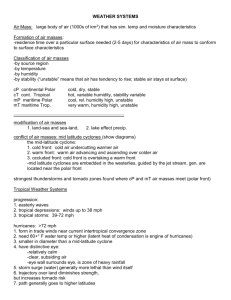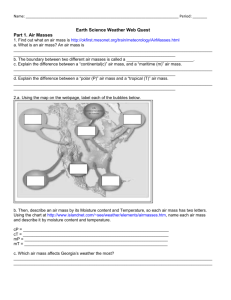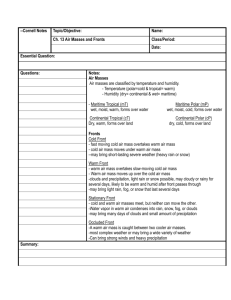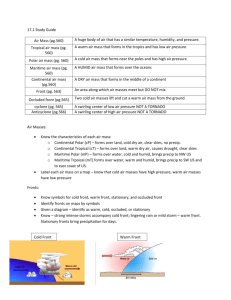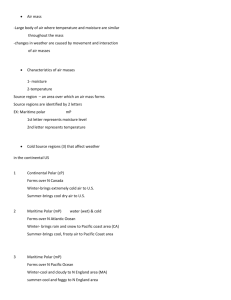Chapter 3 section 1 Notes
advertisement
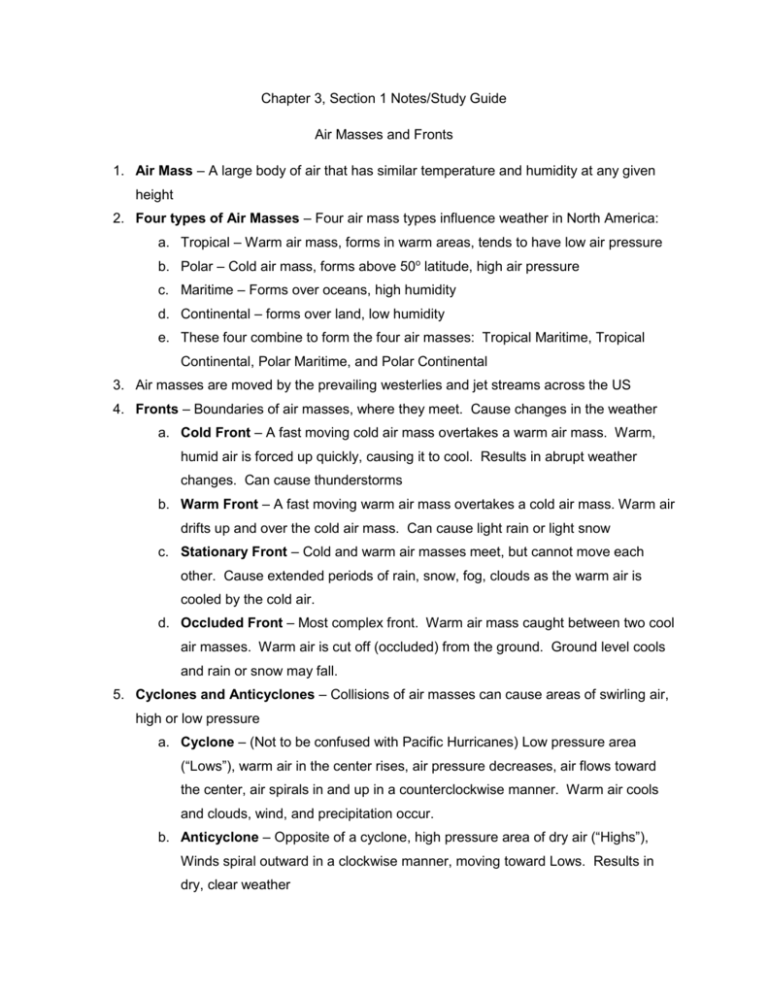
Chapter 3, Section 1 Notes/Study Guide Air Masses and Fronts 1. Air Mass – A large body of air that has similar temperature and humidity at any given height 2. Four types of Air Masses – Four air mass types influence weather in North America: a. Tropical – Warm air mass, forms in warm areas, tends to have low air pressure b. Polar – Cold air mass, forms above 50o latitude, high air pressure c. Maritime – Forms over oceans, high humidity d. Continental – forms over land, low humidity e. These four combine to form the four air masses: Tropical Maritime, Tropical Continental, Polar Maritime, and Polar Continental 3. Air masses are moved by the prevailing westerlies and jet streams across the US 4. Fronts – Boundaries of air masses, where they meet. Cause changes in the weather a. Cold Front – A fast moving cold air mass overtakes a warm air mass. Warm, humid air is forced up quickly, causing it to cool. Results in abrupt weather changes. Can cause thunderstorms b. Warm Front – A fast moving warm air mass overtakes a cold air mass. Warm air drifts up and over the cold air mass. Can cause light rain or light snow c. Stationary Front – Cold and warm air masses meet, but cannot move each other. Cause extended periods of rain, snow, fog, clouds as the warm air is cooled by the cold air. d. Occluded Front – Most complex front. Warm air mass caught between two cool air masses. Warm air is cut off (occluded) from the ground. Ground level cools and rain or snow may fall. 5. Cyclones and Anticyclones – Collisions of air masses can cause areas of swirling air, high or low pressure a. Cyclone – (Not to be confused with Pacific Hurricanes) Low pressure area (“Lows”), warm air in the center rises, air pressure decreases, air flows toward the center, air spirals in and up in a counterclockwise manner. Warm air cools and clouds, wind, and precipitation occur. b. Anticyclone – Opposite of a cyclone, high pressure area of dry air (“Highs”), Winds spiral outward in a clockwise manner, moving toward Lows. Results in dry, clear weather




